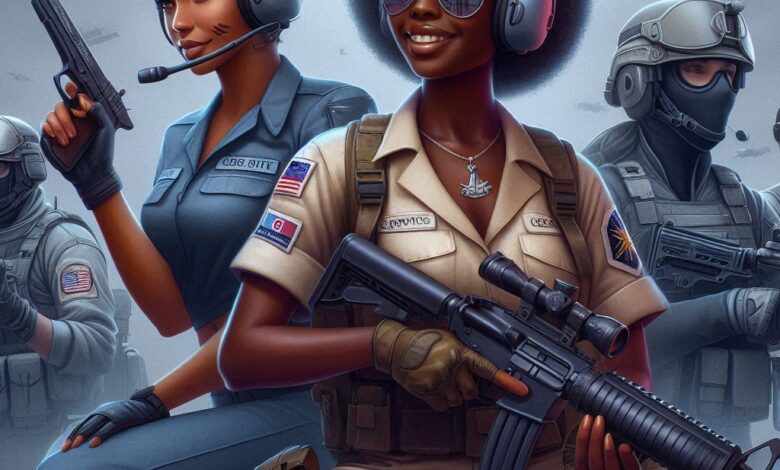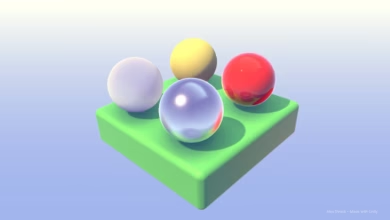Beyond Matchmaking: The PlayHub Impact on Counter-Strike 2

Counter-Strike 2, the latest evolution of the legendary franchise, brings with it the familiar tension of tactical firefights, precision aiming, and economy-based decision-making—but also a new layer of community engagement, customization, and player-driven growth. In such an environment, services that support gameplay improvement, skin trading, and competitive matchmaking become increasingly prominent. One such platform, PlayHub.com, offers players additional tools and opportunities to shape their Counter-Strike 2 experience. This review will explore how PlayHub integrates with CS2, what services it offers, and how it complements the dynamics of a modern tactical shooter without overstating its value compared to others in the same ecosystem.
Enhancing the Tactical Core
One of the fundamental shifts in Counter-Strike 2 lies in its reworked engine and upgraded mechanics. Movement feels sharper, grenade physics are more realistic, and smokes now react dynamically to bullets and player movement. This evolution of gameplay demands a higher level of tactical understanding from players. Here, PlayHub.com provides an avenue not just for conventional matchmaking but for players to test specific strategies through private matchups and focused practice sessions.
Many users leverage PlayHub’s player-created lobbies to rehearse site executions, retake patterns, or utility lineups. This flexibility mirrors traditional scrimming environments but in a more accessible format. For example, teams preparing for tournaments can book specific time slots with opponents of a similar skill tier, creating controlled simulations of competitive pressure without relying on traditional ladder systems.
The same applies to individuals hoping to refine their mechanics. A user can browse through available coaching sessions, often hosted by higher-tier players, and receive 1-on-1 feedback. These insights, tailored to current CS2 dynamics, can be more impactful than watching generic tutorials. Whether it’s movement economy, pre-aim techniques, or grenade placement efficiency, PlayHub adds structure to learning, much like a training regime for athletes.
Customization and Skin Economy
A major attraction in Counter-Strike 2, as with its predecessors, is the skin economy. Weapon cosmetics hold both personal and market value, with players often identifying themselves through their inventory. PlayHub.com taps into this culture with a marketplace that allows for peer-to-peer trading, bypassing some of the limitations found in official trading systems.
The integration of skin swaps, price tracking, and buy/sell offers creates a robust micro-economy within the platform. Players can filter listings based on float value, skin condition, sticker combinations, and rarity. For collectors looking for pristine AWP Dragon Lores or M4A1-S Hot Rods, the platform’s tools offer a curated experience.
What sets this system apart is how it supports custom showcase features. Users can build public inventories, organize skins by loadouts or tournaments, and share profiles with others. In a game where style is almost as important as substance, this social element elevates skin ownership from static inventory management to a personal gallery.
Additionally, seasonal events and patch updates can dramatically alter the perceived value of certain skins. With tools that help track pricing history and anticipate market fluctuations, PlayHub positions itself as a reliable ally for both veteran traders and newer players exploring the economics of skin collection. These features make the platform more than a marketplace—it becomes a strategic hub where cosmetics intersect with investment.
Community Interaction and Learning
Unlike more isolated services, PlayHub.com leans heavily on its community features. Discussion boards and user reviews allow players to share thoughts on strategies, market trends, and in-game updates. This is especially relevant in a game like CS2, where the meta shifts subtly across patches. One day, the meta might favor the AK-47’s 1-tap dominance; the next, slight recoil adjustments may elevate the SG553’s popularity in eco rounds.
PlayHub’s guides and video walkthroughs add another layer to this ecosystem. These are not just beginner tutorials; some are comprehensive breakdowns of map rotations, smoke-wall executions, or pistol round win probabilities based on team composition. Many contributors come from the CS2 community itself, adding authenticity and peer-relevance to the knowledge shared.
From a usability standpoint, the site organizes information cleanly. Popular uploads trend automatically, and algorithmic recommendations often highlight content based on your previous browsing or interaction history. This means that if you’ve recently traded an M4A4 skin or booked Mirage practice lobbies, you’re likely to see related content appear at the top of your feed.
Matchmaking and Progression Tools
Matchmaking remains the heart of Counter-Strike 2’s competitive ecosystem. While official matchmaking still serves the broad player base, alternative systems like FACEIT or ESEA have long attracted players looking for higher-tier competitive balance. PlayHub enters this space with a unique approach—one where match-finding is paired with analytics.
Each match played through the service feeds into a personal performance tracker. You’ll find round-by-round accuracy stats, entry frag rates, utility usage heatmaps, and even map-specific tendencies. This kind of breakdown is invaluable for players looking to climb the ranks efficiently.
In addition, you can filter potential matches not just by rank or region, but by role preference and communication habits. So, if you’re a support player looking for teammates who value in-game comms and tactical discipline, the matchmaking filters enable that alignment. This layer of personalization helps minimize the chaos often found in solo queue environments.
Here’s a quick overview of some player-relevant tools:
- Real-time performance dashboards with match history and rating trends
- Role-matching preferences for squad consistency
- Stat comparison modules against similar-rank players
- Dynamic match tracking with economy breakdowns
- Replay tools with tag-based event filtering
These tools make progression feel transparent and purposeful. Rather than grinding blindly through matches, players can set goals tied to measurable stats, such as flash assists per game or utility value in damage.
Market Health and Safety
A common concern among players using third-party services is the security of transactions, particularly when real-money items are involved. PlayHub addresses this with escrow systems and two-factor verification. Skins traded or sold through the site are temporarily held in secure escrow, ensuring both parties fulfill their part of the deal before release.
Additionally, the platform offers a reputation system. Sellers with consistent records and positive feedback receive badges and higher visibility, while reports and disputes are handled through a structured system with chat logs and trade records. While no platform is foolproof, this transparency fosters a layer of trust that’s essential in a game economy worth millions.
In terms of market regulation, PlayHub also imposes cooldowns on account activities and prevents exploitative practices like bot farming or auto-purchasing undervalued items. Combined with an active moderation team and algorithmic fraud detection, the marketplace maintains a relatively clean environment.
The result is a platform that doesn’t just enable transactions—it cultivates a stable ecosystem where rare skins, limited releases, and prized inventories can circulate with reduced risk. This reinforces the legitimacy of cosmetic investment without overshadowing gameplay itself.
Content Creation and Spectator Culture
Counter-Strike has long had a parallel world of spectatorship. Tournaments like IEM, BLAST, and the Major Series draw hundreds of thousands of viewers, and in-game content often reflects that spectacle. PlayHub ties into this ecosystem by providing content tools for aspiring creators.
Users can publish match highlights with integrated stat overlays, montage reels based on tagged moments, or skin showcases. These are tied to personal feeds and even profile ratings, encouraging quality over quantity. For example, a user may post a 3K clutch with timestamps showing smoke usage and bomb timer pressure, complete with annotations and commentary.
In many ways, this transforms casual play into performative content. Users can build reputations not just as players but as analysts, content creators, or skin connoisseurs. PlayHub becomes less of a toolset and more of a social infrastructure supporting diverse types of engagement.
It’s also a fertile ground for player scouting. Some semi-pro organizations browse PlayHub profiles for talent, looking not just at KD ratios but at clutch frequency, communication patterns, and game sense. In a landscape where exposure is often the bridge between Tier 3 obscurity and pro invites, this visibility is vital.
Conclusion
PlayHub.com doesn’t try to reinvent Counter-Strike 2. Instead, it acts as a supplementary layer—one that enhances what already exists through smarter tools, community interaction, and economic support. From targeted training sessions and performance analytics to a curated skin marketplace, the platform covers a wide spectrum of the modern CS2 experience. While it doesn’t replace traditional matchmaking or Valve’s infrastructure, it creates a meaningful extension of it. For players looking to grow, connect, and personalize their journey through CS2, PlayHub is a well-integrated companion on that path.




